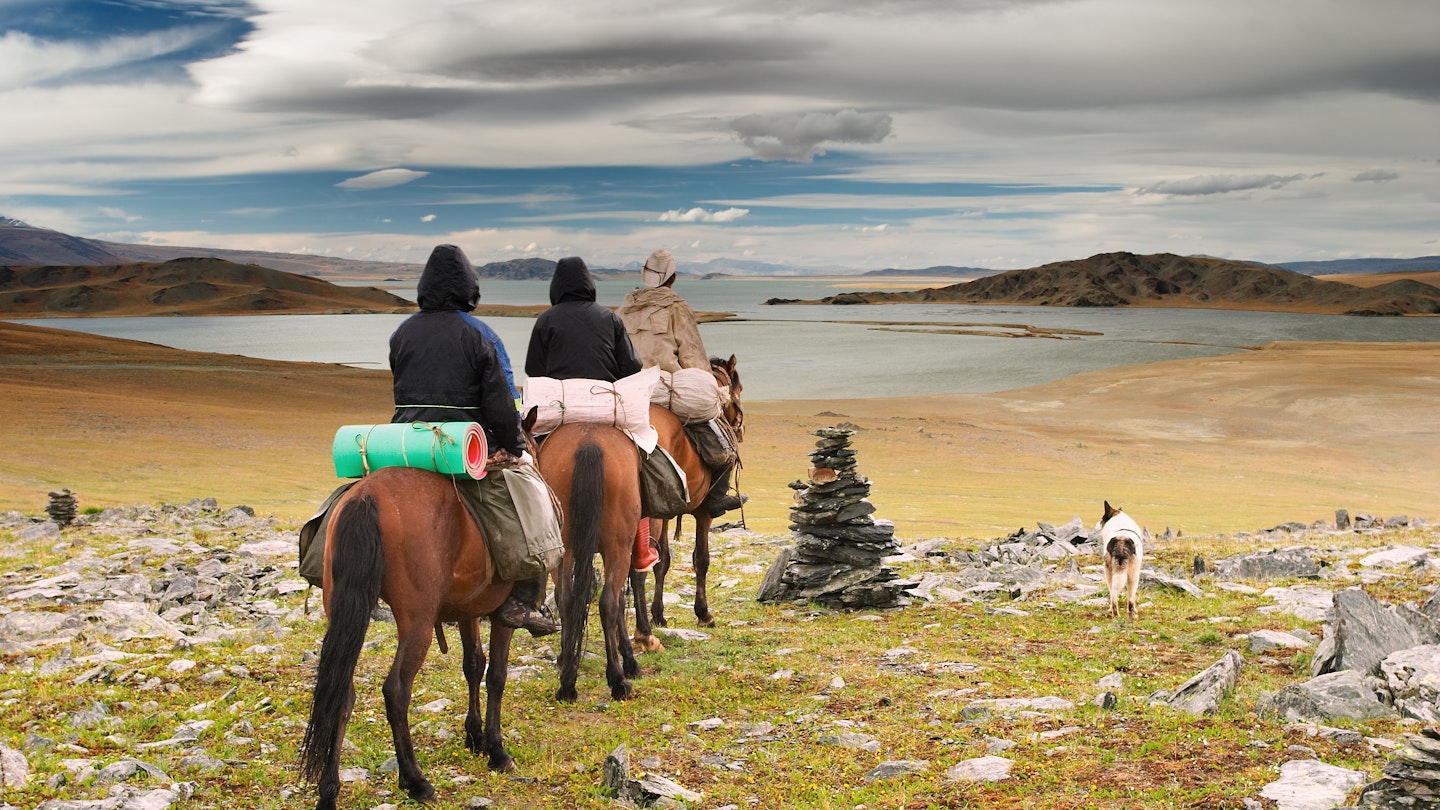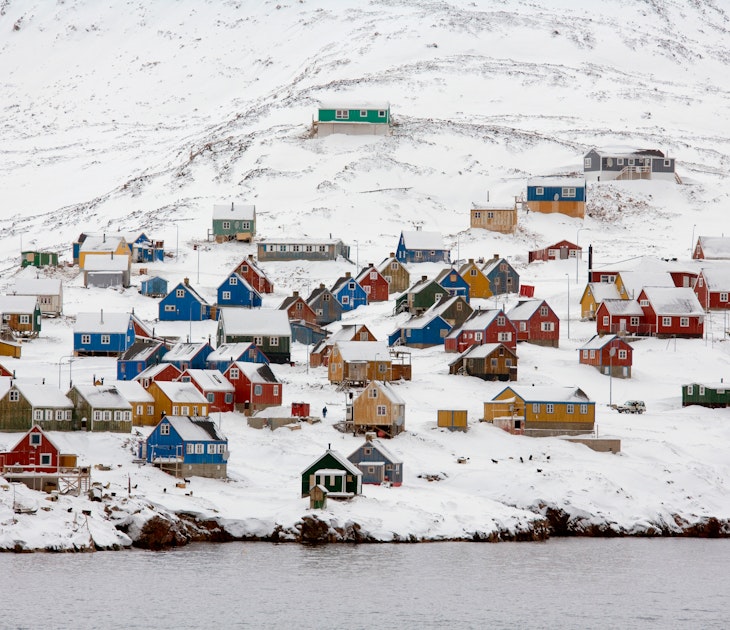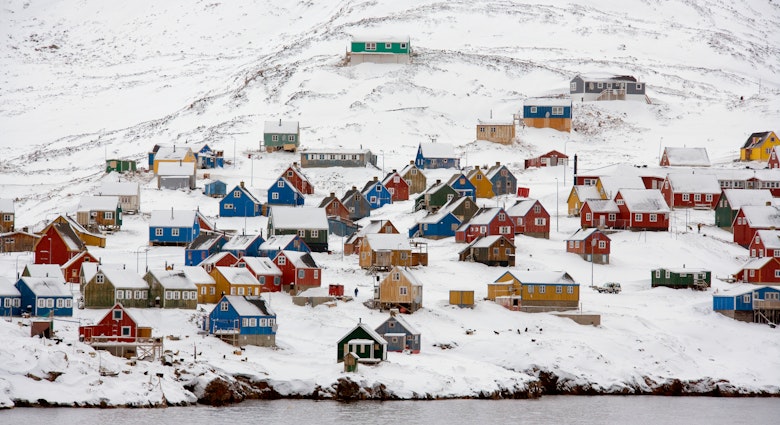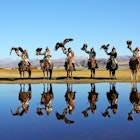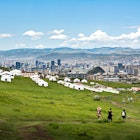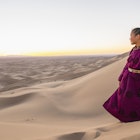Journeying through Mongolia’s epic landscapes is a mesmerizing adventure. The sheer scale and emptiness of the steppe has a hypnotic lure that stays with you long after returning to civilization.
That’s not to say travel is a breeze – in a country three times the size of France, where most "roads" are grassy tracks, it takes a while to get anywhere. But that’s all part of the experience in one the world’s last remaining nomadic societies.
Here’s our guide to getting around this remote and rugged destination.
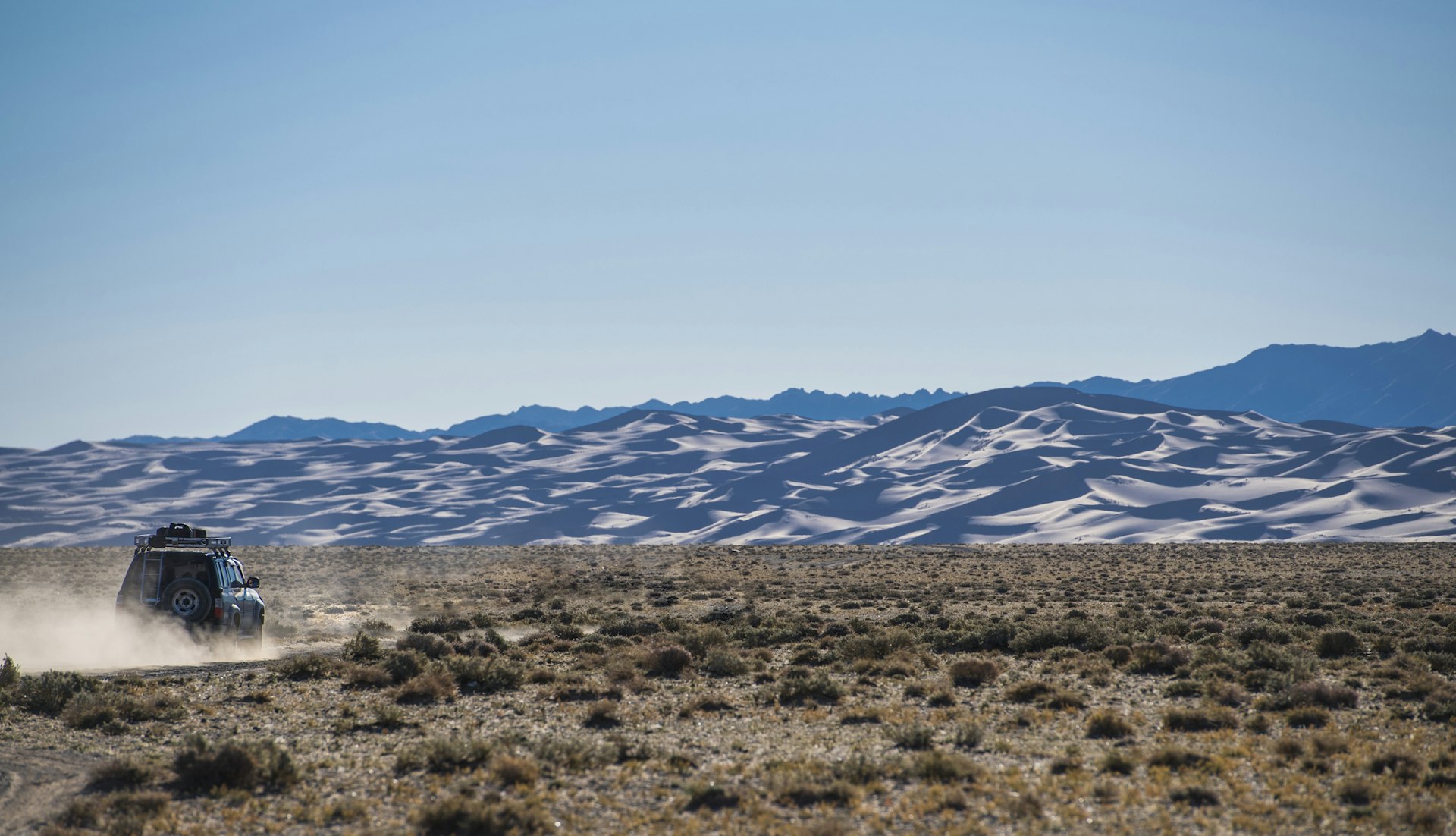
Renting a 4WD is the best way to go cross-country
Once you escape the orbit of Ulaanbaatar, Mongolia’s gateway city, you’ll need a vehicle to properly explore the great outdoors. And a 4WD is essential unless you only plan to travel to sights connected to the capital by paved road, such as Khövsgöl Nuur National Park.
To handle the rough and tumble of the grasslands, the 4WDs of choice in Mongolia include Toyota Landcruisers (favored for comfort) and the retro-cool, Russian-made UAZ-452. This hard-as-nails off-road van is prized for how easy it is to fix at the roadside, but on the flipside, it does tend to break down a lot…
The vast majority of Mongolia tours, whether budget or high-end, include a vehicle, driver and also a guide, since drivers generally don’t speak English. Small group tours typically use 4WD vans, which can be notorious bone-rattlers, while private tours for solo travelers, couples and families tend to use more comfortable 4WD "jeeps". Whichever route you go down, it’s important to book well in advance – Mongolia’s travel season is fleeting (snow often hits Ulaanbaatar by September, and rarely thaws before April) and vehicle fleets are soon booked out.
Self-drive is an option for experienced adventurers
It’s also possible to go it alone and rent your own vehicle from the likes of Sixt or Drive Mongolia. You’ll need your home driving license (valid for at least one year) as well as an international driving permit. Most self-drivers are content to stick to the expanding paved road network with proper motorist facilities fanning outwards from Ulaanbaatar. If you're planning to venture much further or go off-road, you should be ready for challenges such as water-crossings and trying not to get hopelessly lost.
Cellular phone coverage can be spotty in remote areas, so you should take a compass and physical map as a backup. Also consider hiring a guide to join you on the trip – they can check in with locals for advice on how to avoid routes that lead to mud, swollen rivers or sands. You’ll need jerry cans for extra fuel and at least two spare tires. For trips to ultra-remote, unpopulated areas such as parts of the Gobi, you should have a minimum of two vehicles.
When choosing a tour or planning your own (off) road trip, don’t be too ambitious – Mongolia is vast and your top speed on the grasslands will rarely exceed 40–50 km/h (25–31 mph). If you try to fit in too much, you’ll end up spending hours on end in the car and burn through gallons of fuel, one of the major costs in Mongolia. It’s better to focus on one region, or to budget at least two nights at each stop so you get the chance to stay put and savor the serenity of the landscape.

Traveling by horse, camel or yak is a wonderful way to explore
The Mongol empire was built on the backs of its hardy horses, and the love that Mongolians have for riding is a joy to behold. Many tour operators can arrange multi-day guided horse treks in provinces such as Arkhangai, Khövsgöl and Khentii. Khövsgöl Nuur in particular has a good network of guides and available horses.
The adventurous can even mount their own expeditions, such as the popular point-to-point ride from Terkhiin Tsagaan Nuur to Khövsgöl Nuur. It takes around two weeks, following twisting river valleys for almost 300km (180 miles).
You can also trek by camel across sand dunes in parts of the Gobi Desert in locations such as the Khongoryn Els and Ongiin Khiid. Both camels and yaks are still sometimes used by pastoral nomads to transport yurts and equipment across the steppes – specialist operators such as 360 Degrees Mongolia offer the chance to partake in a unique form of nomadic slow travel, via pack-camel caravans or on traditional yak and camel carts.
Buses offer a different kind of "slow travel" in Mongolia
Most of Mongolia’s provincial capitals are connected to Ulaanbaatar by large buses that can seat 40 people or more. There are daily services between major hubs, while smaller minivans travel out to destinations in the far west. Even if you catch a bus to another province, keep in mind that you’ll still need a car and driver to get out into the wilds and see the sights.
For inter-province travel in more remote areas, private minivans wait at the local markets in most Mongolian sum (townships) and these depart when full. Traveling by local van is an unforgettable experience, and not always in a good way – expect to be packed in like sardines with other passengers and piles of cargo.

Consider flying if heading out west
Famed for its Kazakh eagle hunters and snow-capped peaks, Western Mongolia is one of the top destinations in Central Asia. It’s also a solid 36-hour drive from Ulaanbaatar, so most international travelers go by plane. Two airlines fly domestically – Aero Mongolia and Hunnu Air – connecting the capital with destinations out west including Ölgii, Khovd City, Ulaangom and Uliastai. MIAT Mongolian Airlines, the national carrier, plans to start domestic flights in 2024.
There are also seasonal flights south to Dalanzadgad (for the Gobi) and east to Choibalsan. Mongolia’s local airlines are reassuringly professional, with smartly-attired cabin crew and online reservation, though it’s wise to book through a local agent (such as Airtrans) as schedules often change. Note that flights can book out far in advance for the peak summer travel season, and are generally double the usual price during the Eagle Festival in October.
Mongolia’s trains are of limited use to travelers
Mongolia’s sparse rail network crosses the country from north to south, essentially comprising a section of the Trans-Mongolian Railway between Moscow and Beijing (international services on this route were closed to tourists at time of writing).
Domestic trains follow the same rails, but they aren’t particularly useful for visitors. You can access the Gobi by riding south from Ulaanbaatar to Sainshand for the red rocks of Ikh Nart Nature Reserve, home to wild ibex and argali (big-horned) sheep. There is also a daily overnight train between Ulaanbaatar and Erdernet, Mongolia’s third-largest city.
Accessible travel in Mongolia
For travelers that use a wheelchair or those with sensory challenges, the key to a successful Mongolia travel experience is reaching out to travel companies well in advance. Explain your needs and choose the company most willing to understand and cater for your specific circumstances. For more information about accessible travel, check out Lonely Planet’s free online Accessible Travel Resources.

